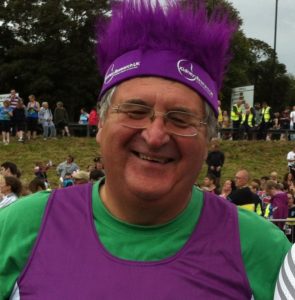(* Part 1 and Part 2 click here)
Now where is my tutu?

With the family moto “Non Offeres” ( “Never Volunteer”) going through my thoughts, as I entered the door of 1, Wimpole Street , London on 10 September 2011 little did I know how that day would change my life for the next seven years.
Wimpole Street is a well-known London landmark, and, No 1 has housed the Royal Society of Medicine in very prestigious surroundings for over a century. (One of the “life changes” I would experience was that I would be visiting many such impressive ,famous and historic venues over the coming years.)
That day it was just to find out about the need for an aHUS patient organisation.
I had kept my head down when a volunteer was asked for to be the first elected Trustee of the patient organisation, which we had discussed and had agreed to form.
The first Trustee’s role was that of Treasurer.
“He will do it” I heard my family say.
I had been a qualified accountant for over 30 years albeit with no experience of charity accounting. What could go wrong?
So “Yeh I will do it” I said.
That was it, that was the start!
The meeting had been called by Professor Tim Goodship, the doctor who we had first heard of when our daughter was first ill in that derelict hospital in Manchester, and when his advice was being sought on the likely outcome of a transplant with a living donor.
Prof Goodship, as he became, had undertaken genetic tests from our blood samples and had found that my daughter and I had a genetic predisposition to aHUS- the only known complement mutation at that time. That was important for the donor decision.
Now we were in the room with the families of another six aHUS patients who had answered Prof. Goodship’s call and had been challenged to become a formal charity with “objectives, rules and a constitution”. To say that there was a reluctance by all to do so would be an understatement.
As the meeting progressed it had become clear to us that such a group was essential to meet the National Health Service’s demands to be able to provide the patient voice when its committee met to evaluate the case for eculizumab to be used for aHUS in England. None of us had done anything like that before, but as our family quickly came to realise that if a “box had to be ticked” then “tick it we would” if it meant that our daughter could have a successful transplant at last. Someone said that “if they had to stand in a corner wearing a tutu singing “God Save the Queen” to get access to a clinically effective treatment, then they would be happy to do so”.
A charity was created, but only five of the seven families attending were prepared to join in. It makes you think that at that time there was estimated to be more than 150 families affected by aHUS in the UK and now the responsibility for them rested on the shoulders of just five. It soon became four as one of those five families had second thoughts following the meeting and resigned, although the reasons for doing so seemed to be odd.
That is what it is like in charities, they are often run by a disparate group of strangers bound together with a common aim, which in our case was to convince the cash strapped NHS to fund treatment for aHUS patients with a drug reputed to be most expensive in the world. And there was less than a month to get started. The first meeting with the NHS was scheduled for early October. If things were to be done that quickly we thought it could all be over with by Christmas.
We also knew enough about each other to be aware that we lived in all corners of England and had no resources to do anything let alone meet up . To fund our ourselves we needed to be a legally registered charity.
The “tutu option” needed serious reconsideration as it now seemed to be the better alternative!

